Teaser Figure

Humans naturally perform bimanual skills to handle large and heavy objects. To enhance a robot's object manipulation capabilities, generating effective bimanual grasp poses is essential. Nevertheless, bimanual grasp synthesis for dexterous hand manipulators remains underexplored. To bridge this gap, we propose the BimanGrasp algorithm for synthesizing bimanual grasps on 3D objects. The BimanGrasp algorithm generates grasp poses by optimizing an energy function that considers grasp stability and feasibility. Furthermore, the quality of the synthesized grasps is verified using the Isaac Gym physics simulation engine. These verified grasp poses form the BimanGrasp-Dataset, which is the first synthesized bimanual dexterous hand grasp pose dataset to our knowledge. The dataset comprises over 150k verified grasps on 900 objects, facilitating the synthesis of bimanual grasps through a data-driven approach. Last, we propose a diffusion model (BimanGrasp-DDPM) trained on the BimanGrasp-Dataset. This model achieved a grasp synthesis success rate of 69.87% and significant acceleration in computational speed compared to BimanGrasp algorithm.
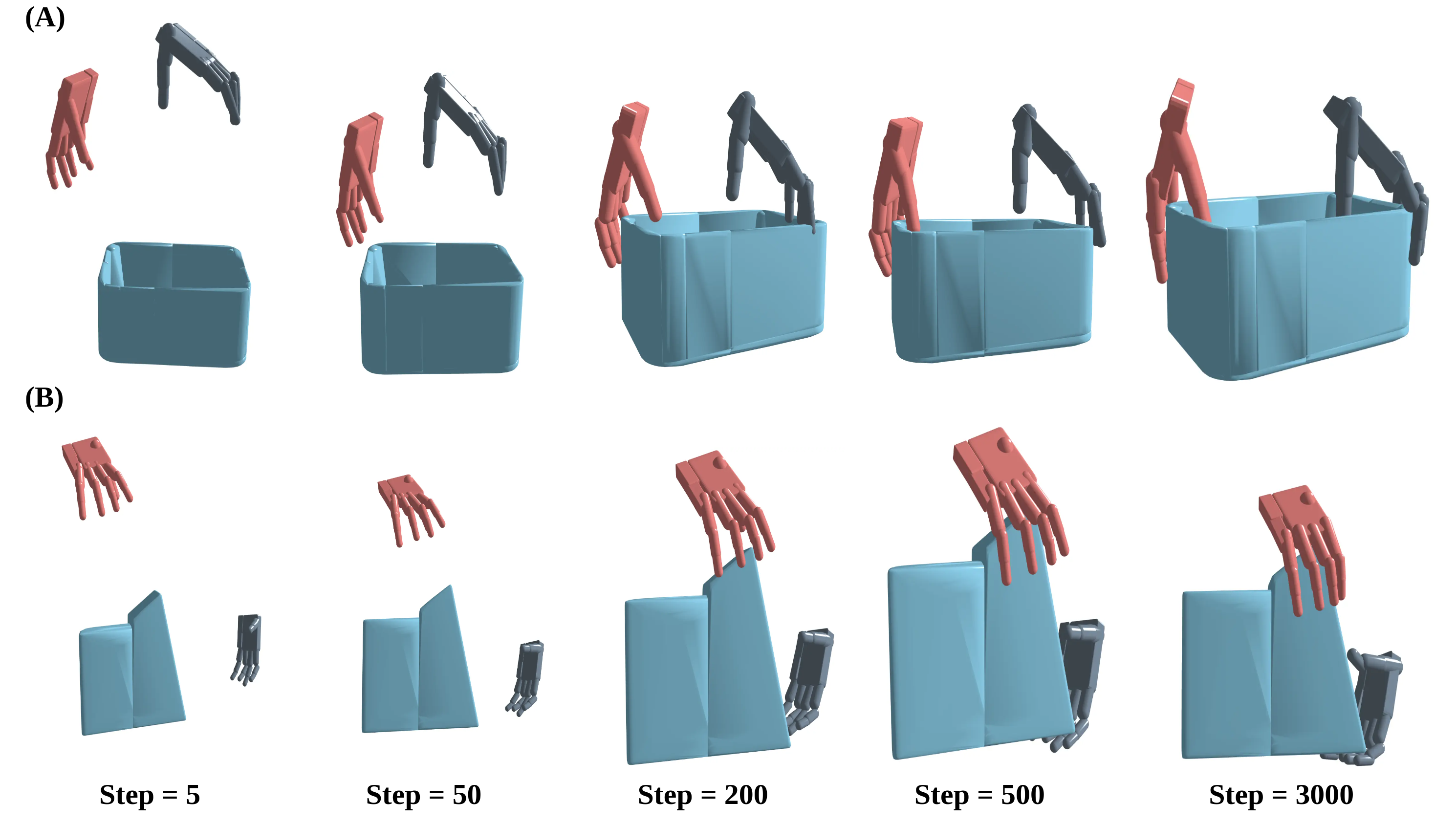
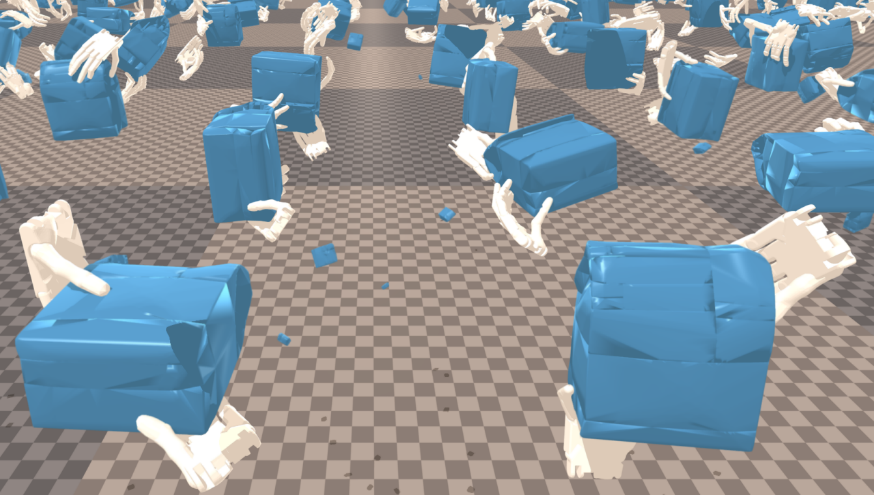
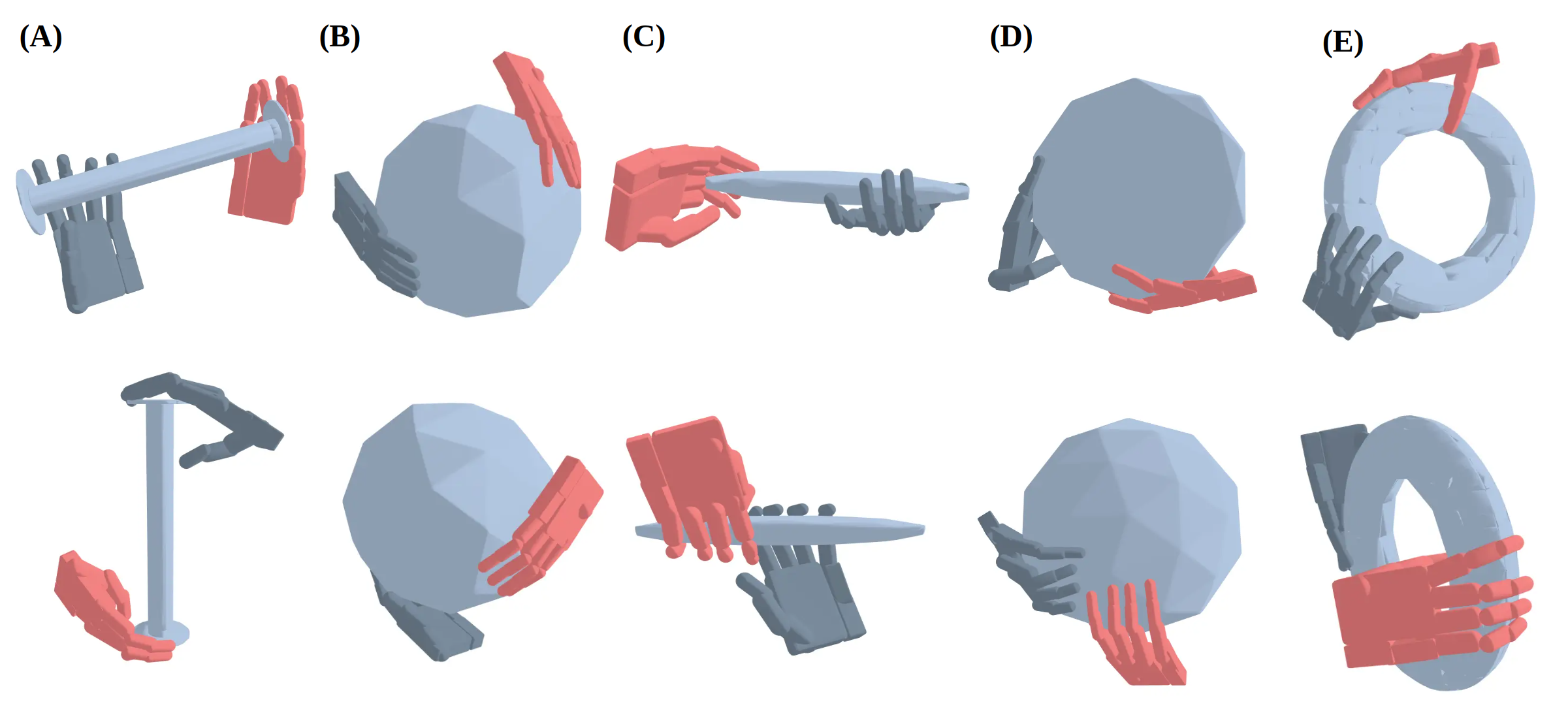
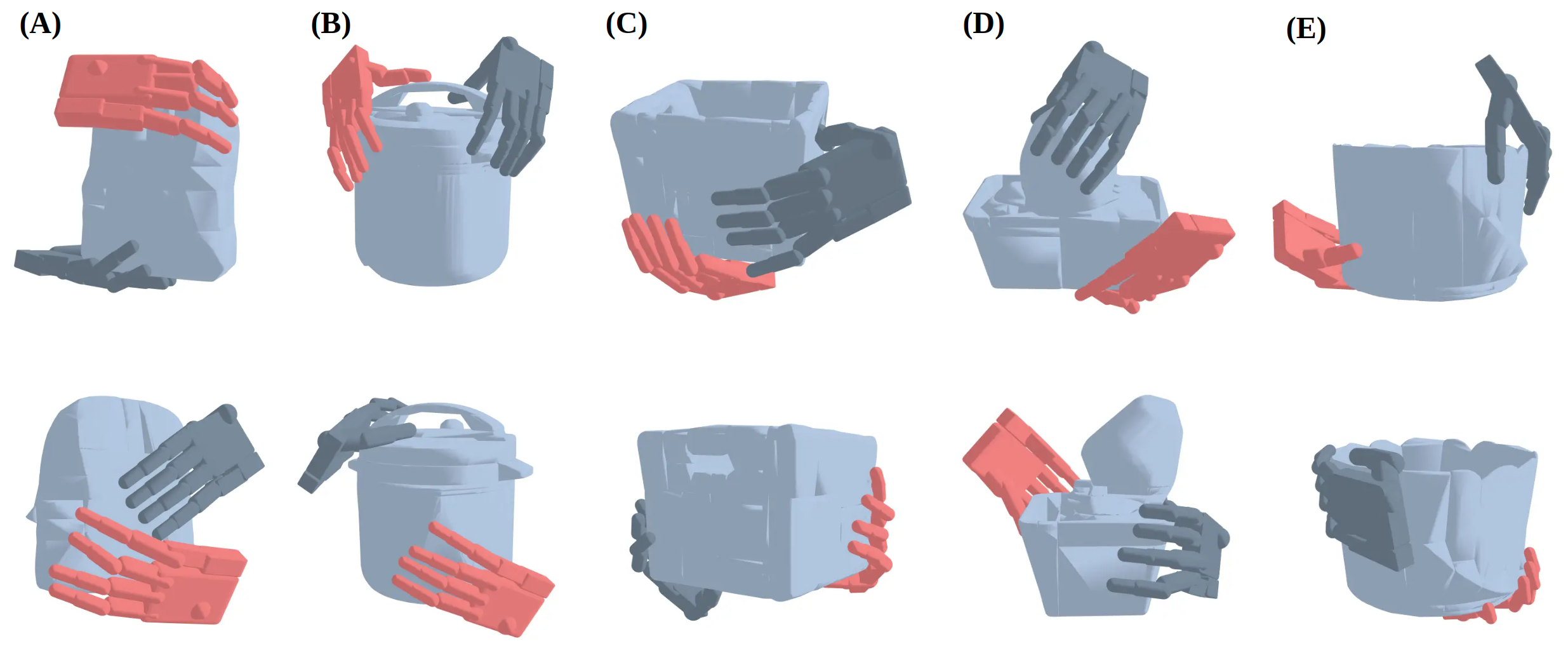
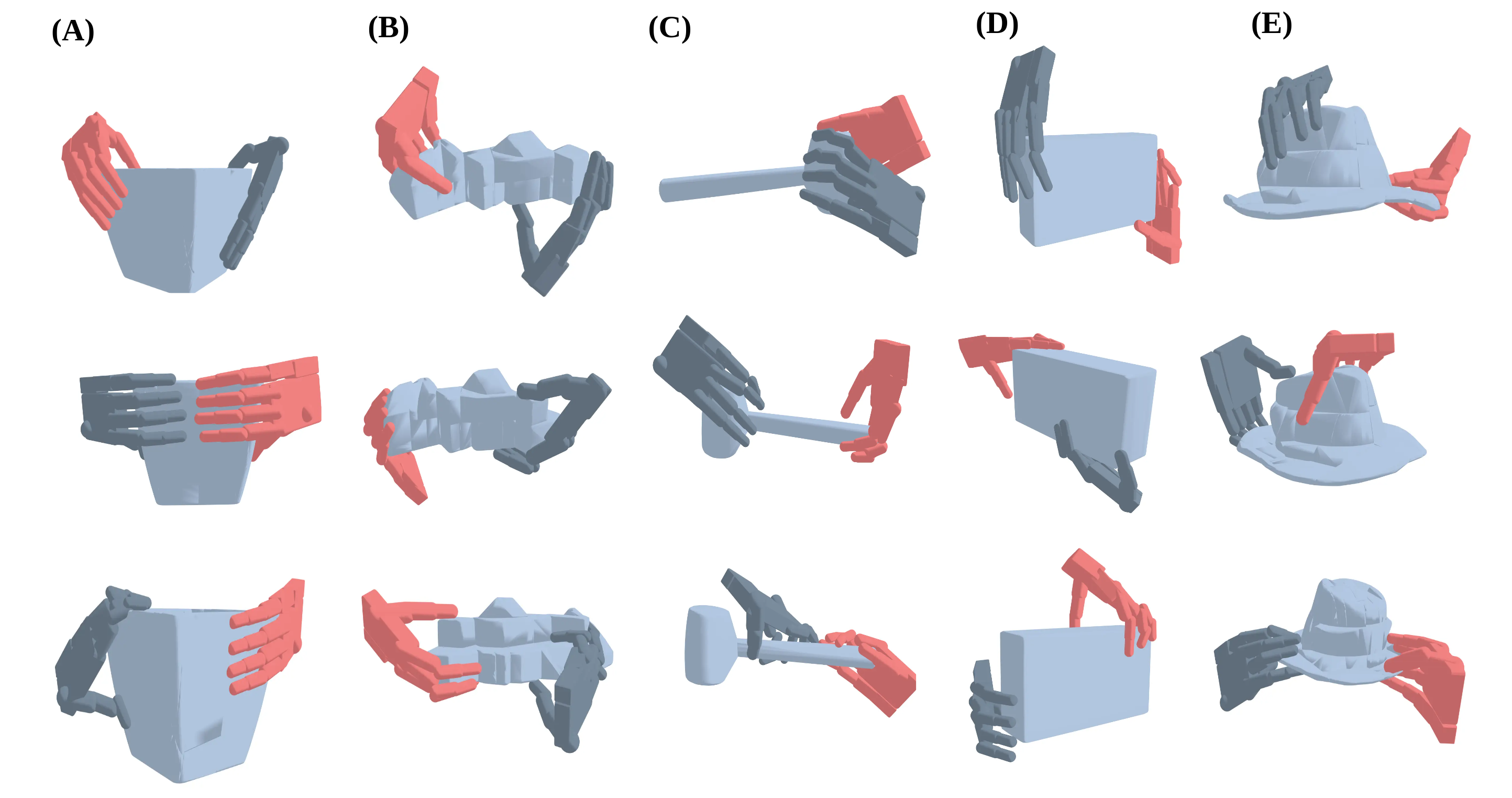
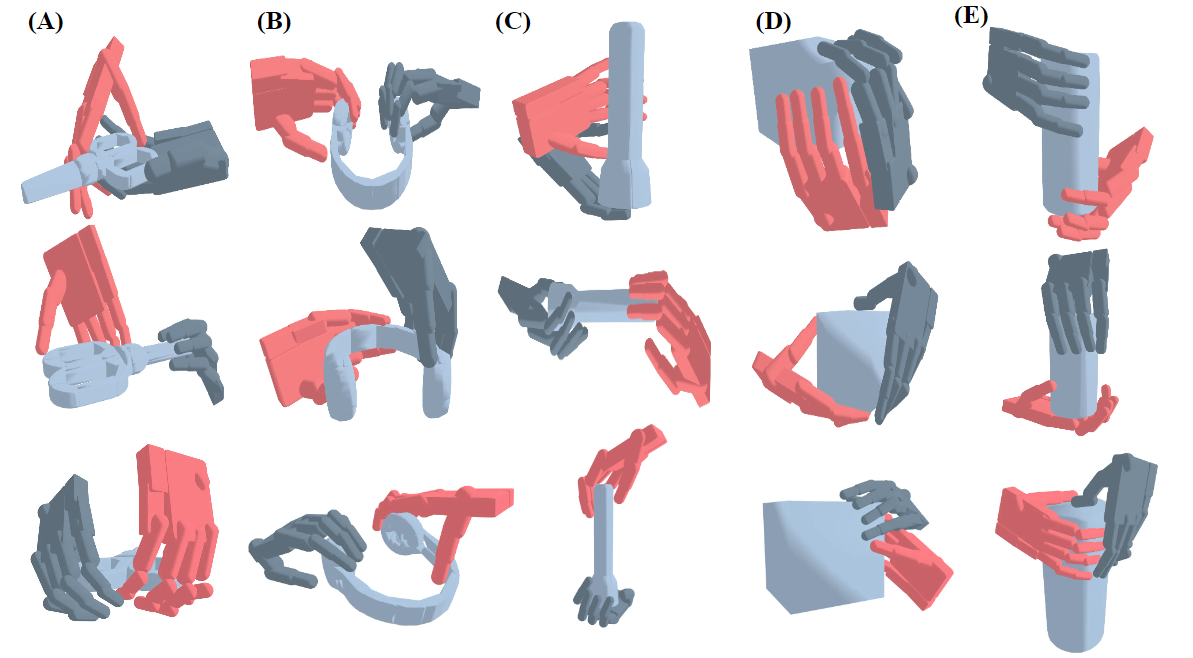
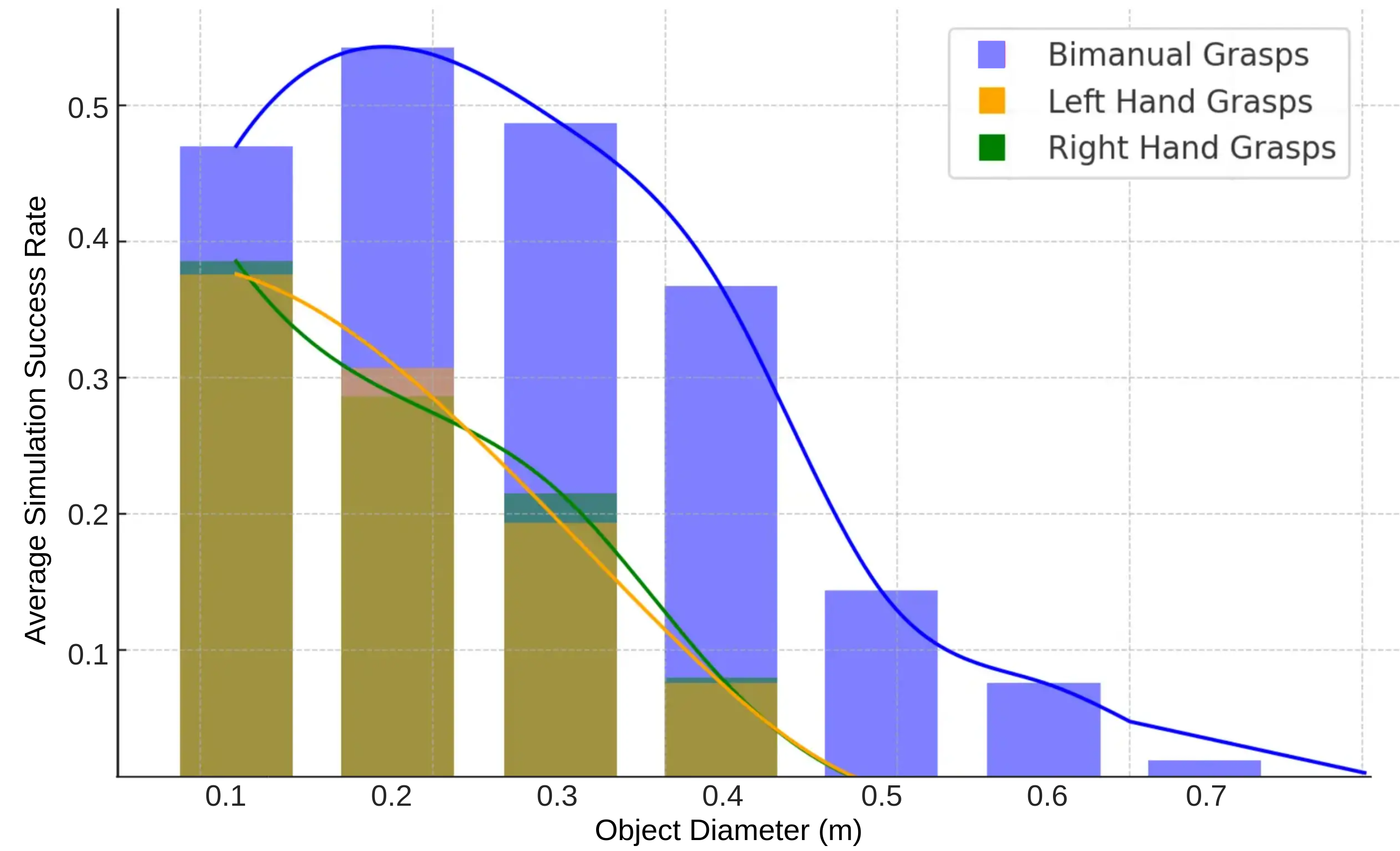

@article{shao2024bimanual,
author={Shao, Yanming and Xiao, Chenxi},
journal={IEEE Robotics and Automation Letters},
title={Bimanual Grasp Synthesis for Dexterous Robot Hands},
year={2024},
volume={9},
number={12},
pages={11377-11384},
doi={10.1109/LRA.2024.3490393}}